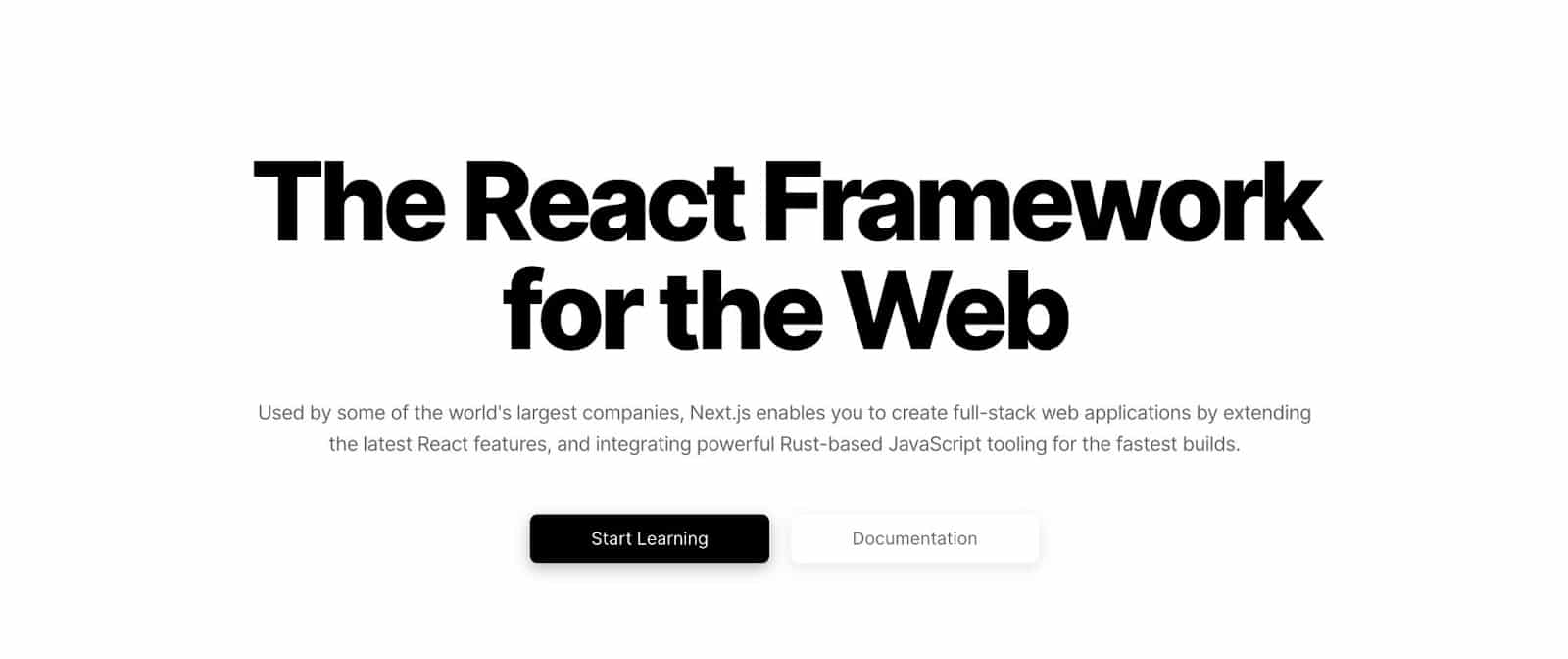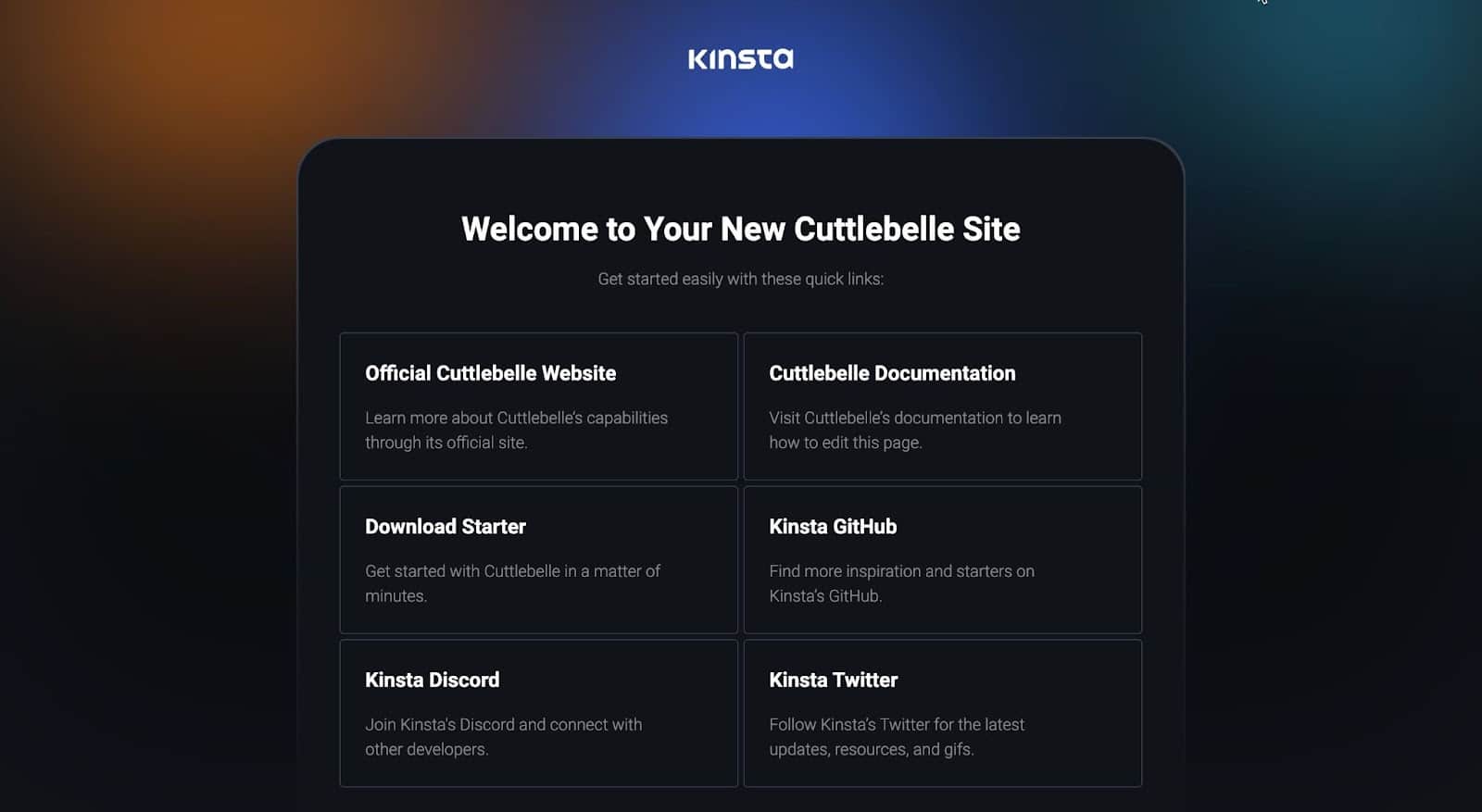In the ever-evolving web development landscape, Static Site Generators (SSG) have emerged as a popular tool for developers to create websites quickly and efficiently. They bridge the gap between traditional static websites, built with HTML and CSS that require manual updates and modifications, and dynamic websites, which rely on databases and server-side scripting languages like PHP.
This article will explore the top React static site generators in 2023. We will also discuss how to choose the best one for your specific project needs.
What Is a React Static Site Generator?
A React static site generator is a tool that allows you to generate a static website using React components as the building blocks for your site. Before we move on, what is a static site and static site generator?
A static site is a website that consists of pre-built HTML, CSS, and JavaScript files that are served to the user exactly as they were generated by the static site generator. These files do not change based on user interactions or inputs and do not require server-side processing.
A static site generator is a tool that automates the process of building static websites. It takes input files (such as Markdown files, HTML templates, or React components) and generates static HTML, CSS, and JavaScript files that can be served directly to users — making it possible for developers to create websites quickly and easily without the need for a full web application stack.
React Static Site Generator: Use Cases
Before the advent of static site generators, developers had to code each website page using HTML and CSS manually. This approach was time-consuming and prone to errors, making it difficult to maintain and update large websites.
With a React static site generator, developers can create a template or layout that can be reused across multiple pages, making it much easier to update and maintain large websites. This results in significant time and cost savings and improved website performance.
Some high-level pros of using a React Static Site Generator include:
- Improved website performance and speed
- Easier maintenance and deployment
- Better scalability and flexibility
- Enhanced SEO capabilities
Some specific examples of use cases for React Static Site Generators include:
- Building documentation websites: It can be used to create documentation sites that are easy to navigate and update.
- Developing blogs: It can also be used to create fast, responsive blogs that are easy to update, maintain, and host.
- Creating ecommerce sites: It can be used to create fast, scalable ecommerce sites that offer a great user experience — because these sites are static, they can handle large amounts of traffic without slowing down or crashing.
6 React Static Site Generators to Consider
Before we explore each of these React static site generators, it is important to understand that when you generate a static site using a static site generator, you are left with a set of static files that can be served directly to users without the need for server-side processing. You’d need to host these static files.
Kinsta offers scalability, reliability, and security for static site hosting through our Static Site Hosting solution. To get started, access your MyKinsta dashboard. Once there, click the Static Sites tab on the sidebar, and choose the site you want to host from your Git provider for hassle-free hosting.
With that in mind, let’s review some of our top picks for React static site generators and what makes them worth considering if you’d like to create a React-based site.
1. Next.js

Next.js is a popular React-based framework that has gained widespread adoption in the web development community within the past few years and is now considered one of the best React static site generators.
Next.js is a powerful tool for building static sites, offering a range of features and benefits. For example, It also supports automatic code splitting and lazy loading, which can improve website performance by reducing the amount of code that needs to be loaded on each page.
With Next.js, you can easily integrate popular React libraries and frameworks, such as Redux to manage the state of a shopping cart in an ecommerce website, GraphQL to query product information from an ecommerce API and display it on a product listing page, and Material UI to create beautiful and responsive designs for your website. This flexibility and ease of integration have contributed to the widespread adoption of Next.js by developers and businesses alike.
Next.js is utilized by well-known websites such as Hulu and TikTok.
This static site generator is flexible and can be utilized to create a diverse range of static sites, including portfolio sites, blogs, landing pages, and other static websites. You can learn more in the Next.js official documentation.
How To Deploy a Next.js Static Site on Kinsta

You can create a Next.js portfolio static site by forking this portfolio project repository, adjusting its information, and deploying to our Static Site Hosting.
Alternatively, you can use Kinsta’s Application Hosting to deploy your Next.js app. Additionally, you can customize your Next.js deployment with Docker.
2. Gatsby

Gatsby is a GraphQL-powered static site generator built on React. It was first released in 2015 and has since gained significant traction in the web development community.
Gatsby is a static site generator that can be used to build fast, high-performance websites by combining the power of modern web technologies such as React, GraphQL, and Webpack.
Gatsby enables the use of React components to construct static pages. For example, you can create a React component for displaying a blog post and use Gatsby to generate static pages for each blog post.
Gatsby is a highly adaptable static site generator utilized by many prominent websites, including Nike and Airbnb. It can be used to build various types of static websites, including blogs, documentation sites, portfolio sites, landing pages, and more. You can learn more via the Gatsby official documentation.
How To Deploy a Gatsby Static Site on Kinsta

You can set up a Gatsby static site on Kinsta by forking our quick start example and deploying to our Static Site Hosting which provides you a URL that loads up your Gatsby static site within seconds.
3. Docusaurus

Docusaurus is a React-based static site generator that is specifically designed for building documentation websites.
It is an open-source tool that was created by Meta and maintained by a team of developers who work closely with the React community.
Docusaurus offers a number of benefits to developers who are building documentation sites. Some of these benefits include:
- Easy to set up and use: comes with a simple and intuitive setup process.
- Customizable and flexible: highly customizable and offers a wide range of options to developers, such as themes, plugins, and styles.
- Good for large projects: well-suited for large projects, as developers can easily organize their documentation into multiple sections and pages.
- Good for collaboration: comes with a built-in version control system that allows multiple users to collaborate on the same documentation site.
- Good for SEO: generates static websites that are optimized for search engine optimization (SEO).
- Responsive design: comes with responsive design capabilities optimized for viewing on different devices and screen sizes.
One of the key advantages of using Docusaurus with React is that it allows developers to take advantage of React’s powerful features. This includes the ability to create reusable components, which can be a major time-saver when building a documentation site (see below).
Overall, Docusaurus is an excellent choice for developers building documentation sites who want a powerful, customizable tool specifically designed for that purpose.
Some popular sites built using Docusaurus are React Native, Algolia DocSearch, and Ionic. You can read more in the Docusaurus official documentation.
How To Deploy a Docusaurus Static Site on Kinsta

You can create and customize a Docusaurus blog by forking this Docusaurus example site and deploying it to Kinsta’s Static Site Hosting.
4. Astro

Astro is a modern and flexible static site generator. It is one of the top React static site generators because it’s designed to be highly configurable and customizable, with a wide range of themes and integration you can use to suit various needs. Some of the integrations available for Astro include:
- MDX Integration
- Image optimization Integration
- Tailwind Integration
One major advantage of using Astro is that it takes advantage of React’s powerful component model, allowing developers to build complex UIs using their already familiar React syntax.
Some examples of where Astro might be used include:
- Building static websites that require complex UIs and dynamic content.
- Creating documentation sites or knowledge bases that need to be highly organized and searchable.
- Building landing pages or marketing sites that need to be optimized for performance and conversion.
- Developing ecommerce sites or other applications that require fast page loads and responsive UIs.
Astro is used by many popular websites like The Guardian Engineering. You can learn more about Astro and how to integrate React into your Astro project by reading their documentation.
How To Deploy an Astro Static Site on Kinsta

You can easily set up an Astro website by forking a sample application on GitHub. Then deploy to Kinsta’s Static Site Hosting, to make it available to the internet.
5. Qwik

Qwik is a fast and lightweight React static site generator that is definitely worth checking out for developers looking for a quick and easy way to build performant websites.
Qwik-built sites are able to load quickly because they generate static HTML and JavaScript pages at build time. They do not require server-side rendering or JavaScript execution at runtime. It is important to know that Qwik also has solid support for other web technologies, including Webpack, Babel, and TypeScript.
It uses pre-rendering and caching to minimize server requests and speed up page loads — making Qwik-built sites deliver lightning-fast performance, even on slow or unreliable networks.
In general, Qwik offers the following unique advantages:
- It is designed to be fast and efficient.
- Its development workflow is designed to be simple and intuitive.
- It is highly flexible and customizable, with a wide range of plugins and options available to suit various needs.
- It is designed to be SEO-friendly, with built-in support for metadata tags and structured data.
Qwik is used to build so many websites, as seen in the showcase, and can be used to build all forms of static sites, such as portfolio websites and landing pages. You can learn more via its official documentation.
How To Deploy a Qwik Static Site on Kinsta

You can create a Qwik static site by forking this sample project and deploying it to Kinsta’s Static Site Hosting.
6. Cuttlebelle

Cuttlebelle is a React-based static site generator that allows developers to build flexible and dynamic static websites quickly and easily.
It allows developers to build websites with React components — meaning you can create reusable components that can be used to build pages, sections, and even entire websites using a simple drag-and-drop interface.
Cuttlebelle also supports a wide range of content types, including Markdown, JSON, and YAML. This allows developers to easily create content-rich sites, from simple landing pages to complex web applications.
Although Cuttlebelle is a new and not widely popular static site generator with less recognition on GitHub than established options like Gatsby or Next.js — it has a devoted following among developers who appreciate its distinctive approach to creating static websites.
Check the official Cuttlebelle documentation for more information.
How To Deploy a Cuttlebelle Static Site on Kinsta

You can create a Cuttlebelle static site by forking this example project and deploying it to our Static Site Hosting service.
How To Choose the Best React Static Website Generator?
Choosing the best React static website generator can be daunting, especially when many options are available.
To help you make an informed decision, here are some tips on how to choose the best React static website generator:
- Understand your needs: Before choosing a React static website generator, you should understand your website’s requirements. For example, if you need a website that is easy to set up and maintain, you may want to consider a generator with a simple and intuitive user interface. On the other hand, if you need a highly customizable and scalable website, you may want to consider a more advanced generator.
- Community support: Community support is another critical factor when choosing a React static website generator. Choose a generator with an active community of developers who can provide support and share tips and tricks.
- Check out flexibility: You should choose a React static website generator that allows you to create websites that meet your specific needs. For example, some generators may be more geared towards creating blogs, while others may be better suited for creating documentation websites.
- Evaluate performance: Website performance is critical in today’s fast-paced digital world. Therefore, you should choose a React static website generator that produces fast-loading websites. Some generators create bloated code that can slow down page load times. You want a generator that produces efficient code.
- Analyze ease of use: You don’t want to spend hours figuring out how to use a complicated generator. Therefore, you should choose a React static website generator that is easy to use and has good documentation. You can also look for generators that come with pre-built templates and themes to make the setup process even more straightforward.
You can deploy your static site for free using Kinsta’s Static Site Hosting. However, you can opt for deploying your static site with Kinsta’s Application Hosting, which provides greater hosting flexibility, a wider range of benefits, and access to more robust features. For example, scalability, customized deployment using a Dockerfile, and comprehensive analytics encompassing real-time and historical data.
Summary
Static sites are becoming increasingly popular due to some of the advantages they offer over dynamic sites. They’re suitable for sites with little or no user interaction, such as blogs, portfolios, and company websites.
In terms of speed, security, and cost, static sites are usually faster, more secure, and cost-effective because they don’t require server-side processing or databases.
Are you considering a React static site generator for your next project? Have you ever used one? Let us know in the comments!


